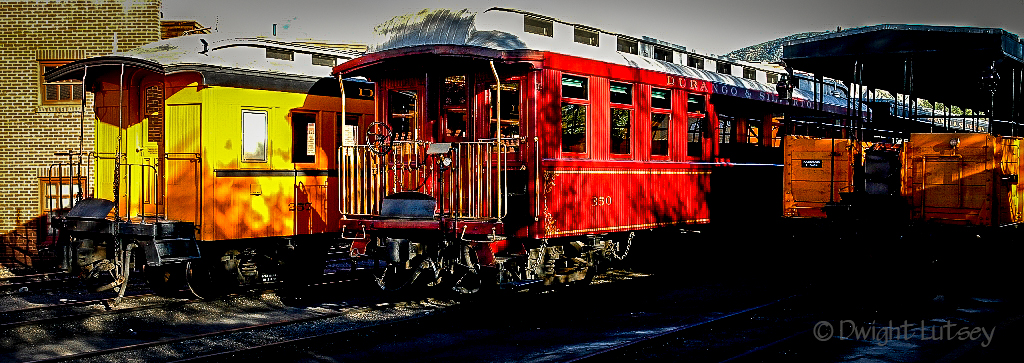
click to enlarge
Back in 1875 when I was in my mid 40’s I bought my first digital camera. In those days digital cameras were a lot different from how they are now. They were roughly the size of a toaster, an eight slice toaster, the lens weighed 82 lbs. and the strap to carry them was at least three inches wide and made out of buffalo hide. The battery was larger than a cow and was hauled around in a small oxcart. The only way you could get anywhere in those days with all your ‘gear’, as we called it then, was by riding a horse. That often became impractical because the weight of the camera would cause the horse to fall, get bloated, expel huge amounts of unpleasant gas and then you would have to shoot it. All in all a costly way to travel.
Or you could walk with all your ‘gear’ on your back, but given what happened to horses when you tried that, that was just stupid. So that left trains. Trains were good because they solved all the problems of other modes of travel and you could stand in the club car and smoke cigars, shoot at buffalo, play cards and when nature dictated it you could whiz off the back of the last Pullman car, a singularly unique experience. This was primarily a guy thing but still, very civilized at the time.
The camera I purchased was state of the art as it could capture color which fortunately was abundant not to mention plentiful and could easily fit onto the images that were made. As luck would have it the railroad cars were also colorful, and stationary much of the time, which made my job much easier.
Prior to the invention of the camera images were much harder to produce as it involved a lot of smearing of paint on a canvas, not losing the lids to your paint jars, remembering where you left your brushes, and all the complicated crap of making images which was generally fraught with complications anyway. With the camera however all of that changed. You simply chose a subject, placed four to six concrete blocks in a semi-circle, constructed a small but sturdy scaffold, bolted your camera to the primary crossbeam, attempted to get the subjects attention if you were shooting people, covered everything with a large tarp of thick sweaty canvas, removed the cast iron cover from in front of the lens and pressed the shutter. Much easier. If you were particularly adept you could often make a many as three different images in a week. My personal record was four but unfortunately that resulted in the untimely death of one of my assistants, a frail young man that was responsible for the care and transportation of the concrete blocks. Everything worked out for the best however as I was able to replace him with a strong Polish lad that could carry all of the blocks under one arm plus drag the canvas. A much better situation. I guess that’s why they called them ‘the good old days’.
The photo above was made over a four-day period when I was traveling from Durango to Silverton to make images for inclusion in an advertisement for the Great Western Railroad and Screendoor Factory. As it happened the Great Western Railroad didn’t have cars like these, not to mention scenery of any kind and ran trains to places no one wanted to go, so they were eager to get photos that they hoped would lure travelers onto their trains thereby staving off financial ruin. Not the soundest of plans but then things were different back then and a job was a job.
Sharing these photos with you has brought back a flood of memories of the ‘good old days’ which although basically untrue are fondly remembered none the less. One needs to enjoy their memories while they can lest they fade away. If by some terrible mischance you don’t have any memories of your own feel free to borrow some of mine or better yet just make up new ones. It makes each day brighter.




You must be logged in to post a comment.